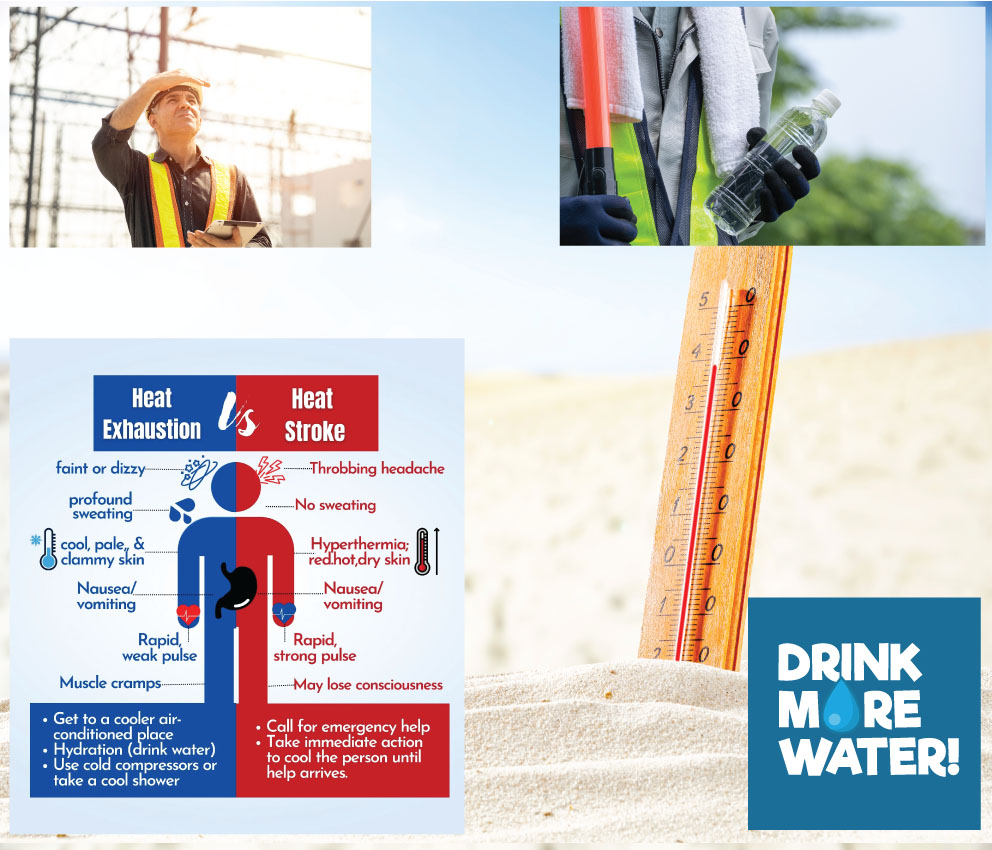
Doing physical work for long periods of time in heat is generally discouraged, as there are a whole host of health risks associated with it. It’s important that employers provide the correct information and health and safety supplies for working in high temperatures, and that employees work sensibly regarding the temperature.
Working in the heat, safety is vital, regardless of where you work. Read on to find our summer safety tips for the workplace.
Tips for Summer Safety
Dress Appropriately
For most professions, working in summer just means switching to wearing clothes with light, breathable fabric. However, if you work outdoors, you should be careful not to leave skin exposed as this leaves you prone to burning. If you do decide to wear shorter sleeves or trousers, you should make sure that you also apply plenty of suncream.
It might also be tempting not to wear Personal Protective Equipment (PPE) when it’s particularly hot, particularly equipment like helmets, which can make you even warmer. However, working in heat doesn’t cancel out the need for your protective equipment. However tempting it might be, remember that your PPE is required for your safety – the hazards they protect you from are still present in the summer!
You can reiterate the importance of wearing PPE to your employees, regardless of the temperature, by placing PPE signage around the workplace.
Stay Hydrated
If you don’t drink enough water in the summer, you could become dehydrated. During heat, you’ll sweat more, which speeds up the dehydration process. As a general rule, you should drink some water every 20 minutes. Drinking water regularly will make the world of difference to your cognitive function, and generally stop you from feeling the following symptoms:
- Fatigue
- Hot, dry skin
- Muscle cramps
- Nausea/dizziness
- Sweating
- Thirst
You should make sure to stay hydrated year-round, regardless of the heat or what your job entails. However, during high temperatures this becomes much more important, and more important again if you’re working outdoors.
Be Careful of Heat Stroke
Working safely in heat is no joke – if your body temperature gets too high, you could be at risk of heat stroke. Heat stroke is caused by your body overheating, usually due to too much physical exertion in high temperatures.
If untreated, heatstroke can lead to severe bodily damage to your muscles, kidneys, heart and/or brain. Look out for heatstroke in the following symptoms:
- Confusion/agitation
- High body temperature
- Hot, dry skin
- Increased heart rate
- Nausea/dizziness
- Rapid breathing
- Slurred speech
- Throbbing headache
- Unconsciousness
You should treat heatstroke immediately, as the damage can get worse the longer it is left for. It’s important to therefore have trained first-aiders on site, and easily accessible first aid equipment, which you should correctly signpost so that it can be easily located.
Be Extra Cautious of Fire Safety
With an increase in heat also comes an increase in fire risk. In fact, researchers have found that a 1 degree Celsius increase in average summer temperature increases the risk of a fire on any given day by 19-22%.
You should make sure your fire escape routes are planned out in the best way possible by carrying out a site-specific risk assessment. Check that your routes also fulfil the right criteria for a safe fire escape route by reading our sister blog post, How to Choose Your Fire Escape Routes.
Although you should already be regularly checking your safety alarms, it’s worth being especially on top of this during the summer. Our handy guide on how to check your safety alarms can help you make sure that your site is as safe as possible if a fire were to take place.
You should also ensure that all fire exit routes and equipment are correctly signposted with fire safety signs.
Make Your Workplace as Safe as Possible
At Label Source, we have a huge range of safety signs and labels available for all the risks and hazards that you could experience in the workplace, whatever your job might be.
Stay up to date on all our health and safety advice on our blog, or follow us on Twitter.